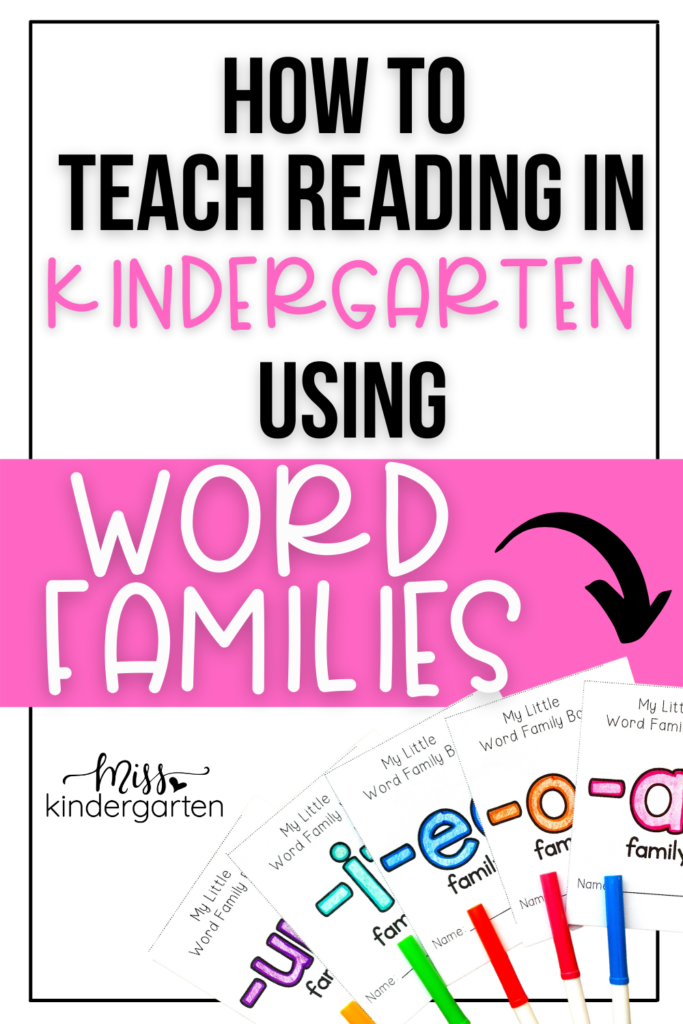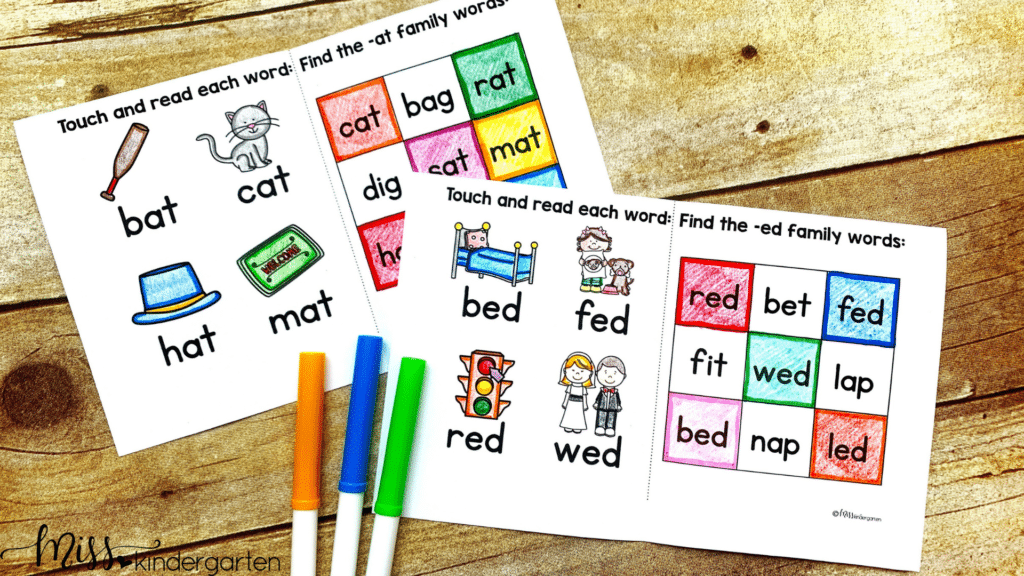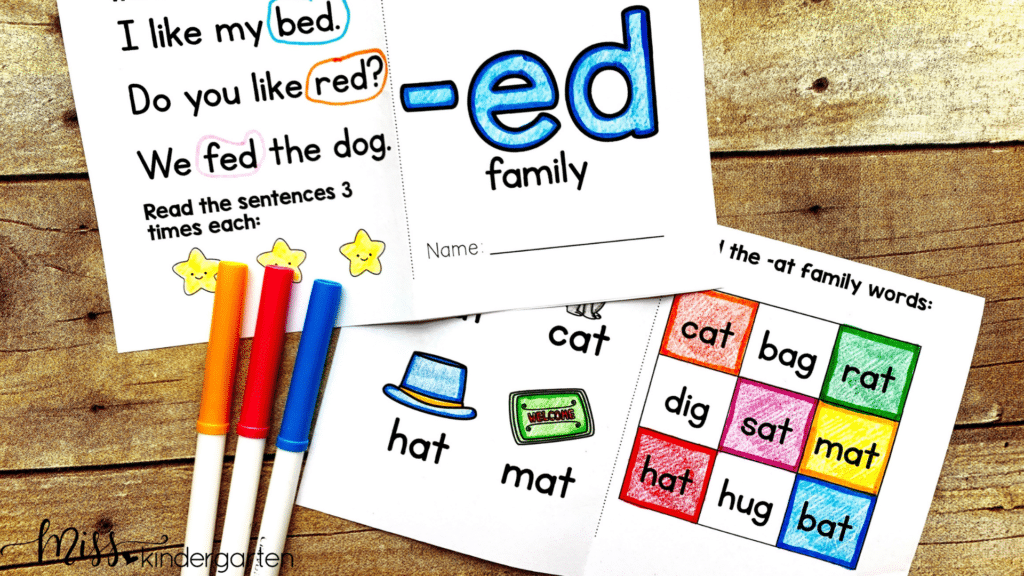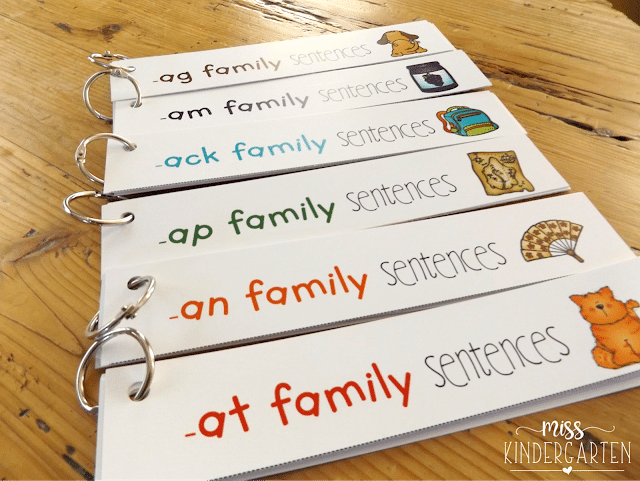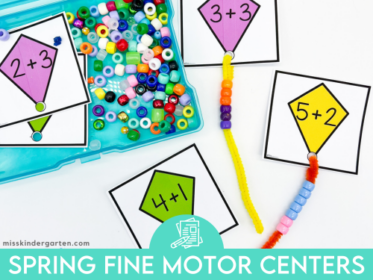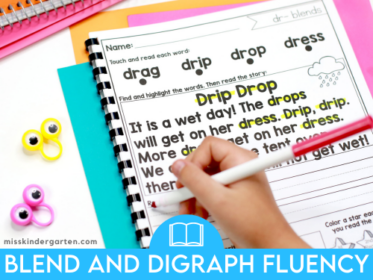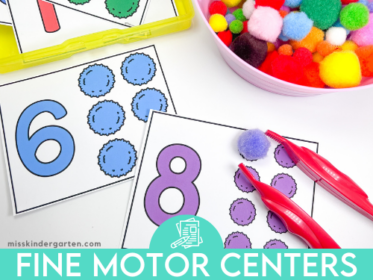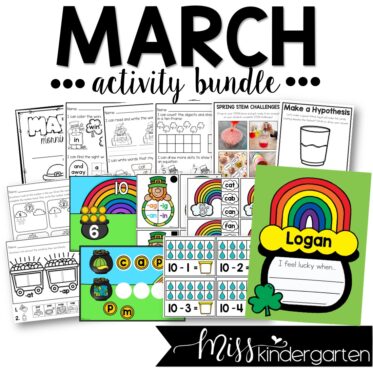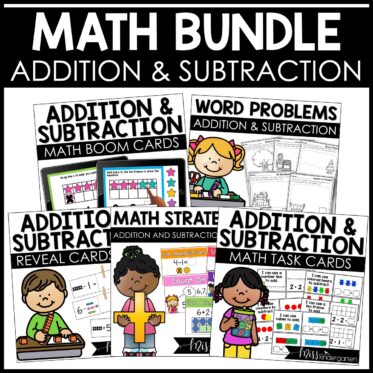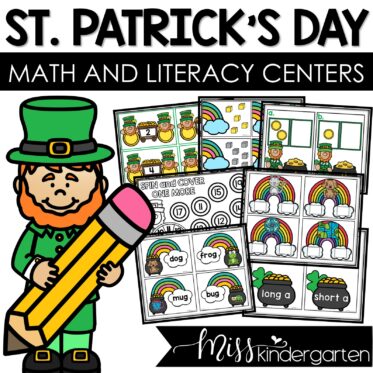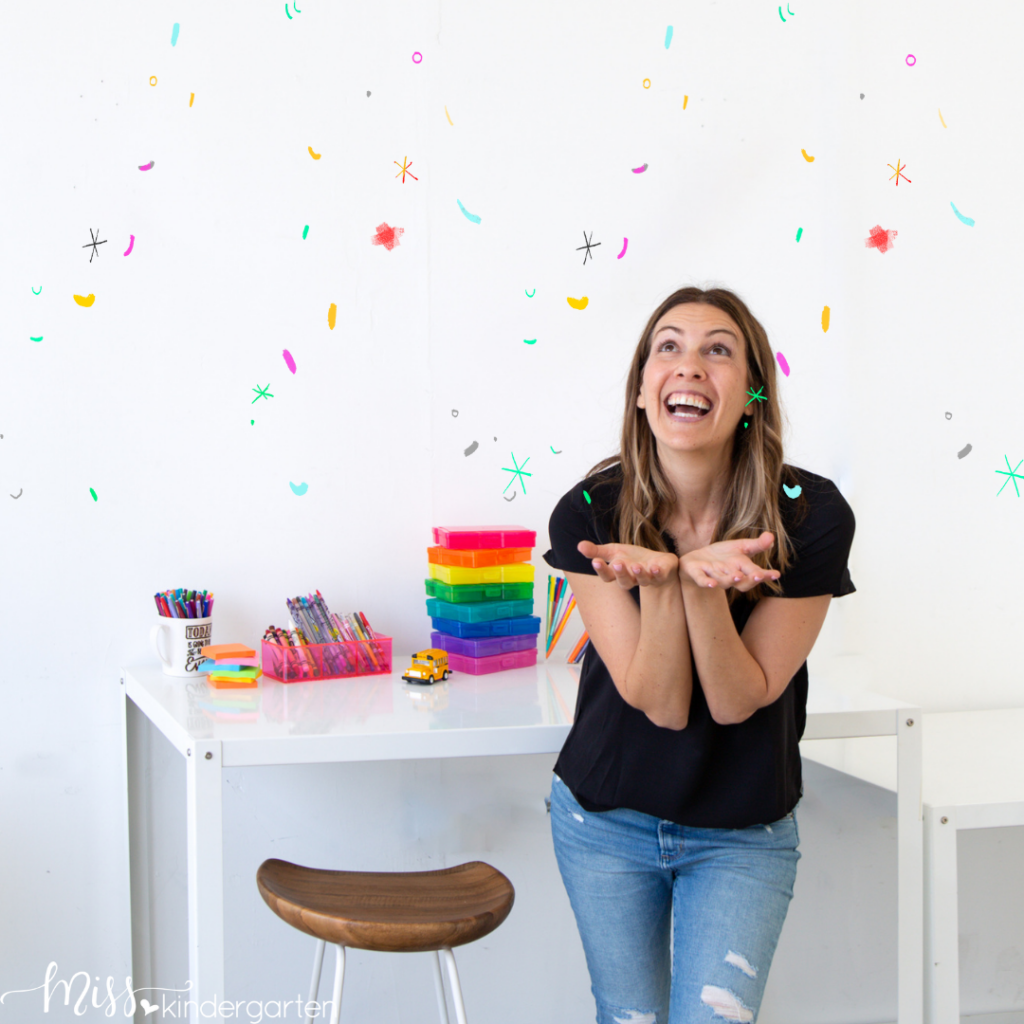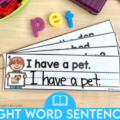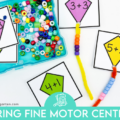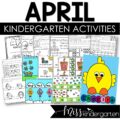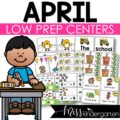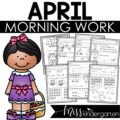Watching your students grow into successful readers is one of the most exciting things about teaching kindergarten and first grade. Seeing my students go from pre-emergent readers to fluent readers amazes me every time! After months and months of hard work, something clicks and their reading takes off. But we know that behind the scenes, there was a lot of intentional planning to get them there. One of the most successful strategies I have found to help young students learn to read is teaching with word families.
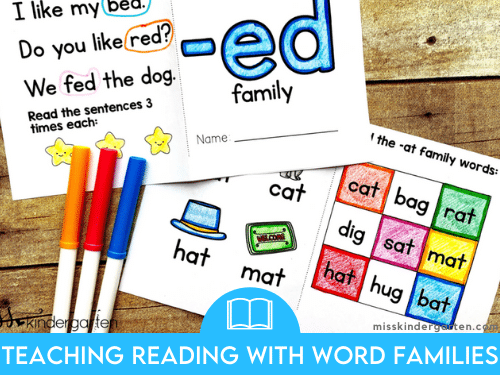
How to Teach Word Families
Teaching reading with word families is one of the most effective techniques I have found as an early literacy educator. The repetition that students see and hear within the words is very important. They start to recognize the phonics patterns quickly and use these skills to help them decode words for years to come. Practicing word families also builds on the skill of rhyming and helps to make the connection between sounds being heard and the letters that make them.
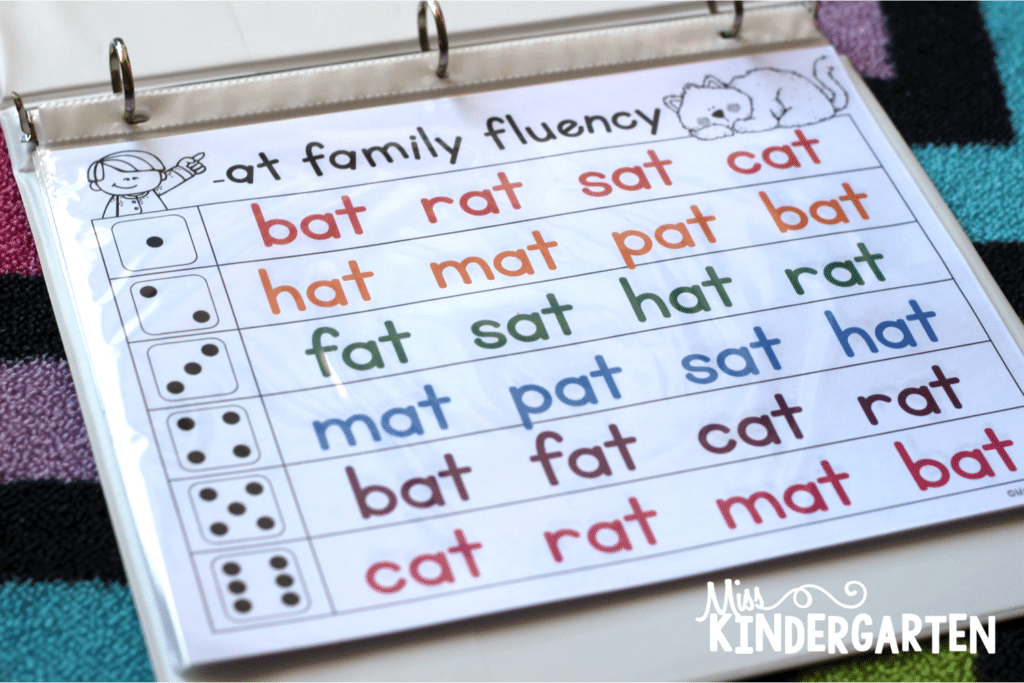
Students begin to understand the basic sounds of letters and words by using word family activities. The process of focusing on a word family allows students to master the “chunk” in the word. Through practice and repetition of the same word family, students become more fluent readers! Check out this FREE resource for using word families to develop reading fluency.
Once students recognize how the rime (the ending chunk of the word) stays the same, they only have to focus on changing the beginning sound. Reading with word families makes decoding much faster and easier for students, which builds their reading confidence. There are so many fun and engaging ways to incorporate word families into your reading lessons. Let’s take a look at some of my favorites!
#1 – Introduce Word Families with Pictures
One of the easiest ways to introduce word families is with pictures. This is a great place to start when introducing a new set of words. Pictures help students make the connection between the sounds of words and the meaning of the sounds. And if your emergent readers have not quite mastered their phonemic awareness, it is a great strategy to help them recognize that letters create words. This not only helps with decoding but it also reinforces that letters have sounds.
Before children are even able to talk, they are already making that important connection between an object they see and the word that is used to describe it. Using that natural way of learning helps students to learn new words and understand that when the letter sounds are put together, they form the word that represents the image.
#2 – Use Hands-On Centers

We all know how much students can learn from hands-on activities. One of the best ways to bring highly-engaging word family practice to your classroom is through centers! By using hands-on centers as part of the learning process, your students will be more engaged and often won’t even realize they are learning!
Word family practice can be incorporated into literacy centers in many different ways. For example, write and reveal activities allow students to build words in various word families. If you’d like to focus on one particular short vowel word family, you can just add those write and reveal activities to the center. The best part of this activity is that each card is self-checking using clothespins (this also adds a bit of hand-strengthening to the center).
CVC word-building activities are a class favorite year after year! I love that they are easy to store and grab as needed. It’s probably no surprise that these activities find their way to our reading groups for word family practice many times during the year!
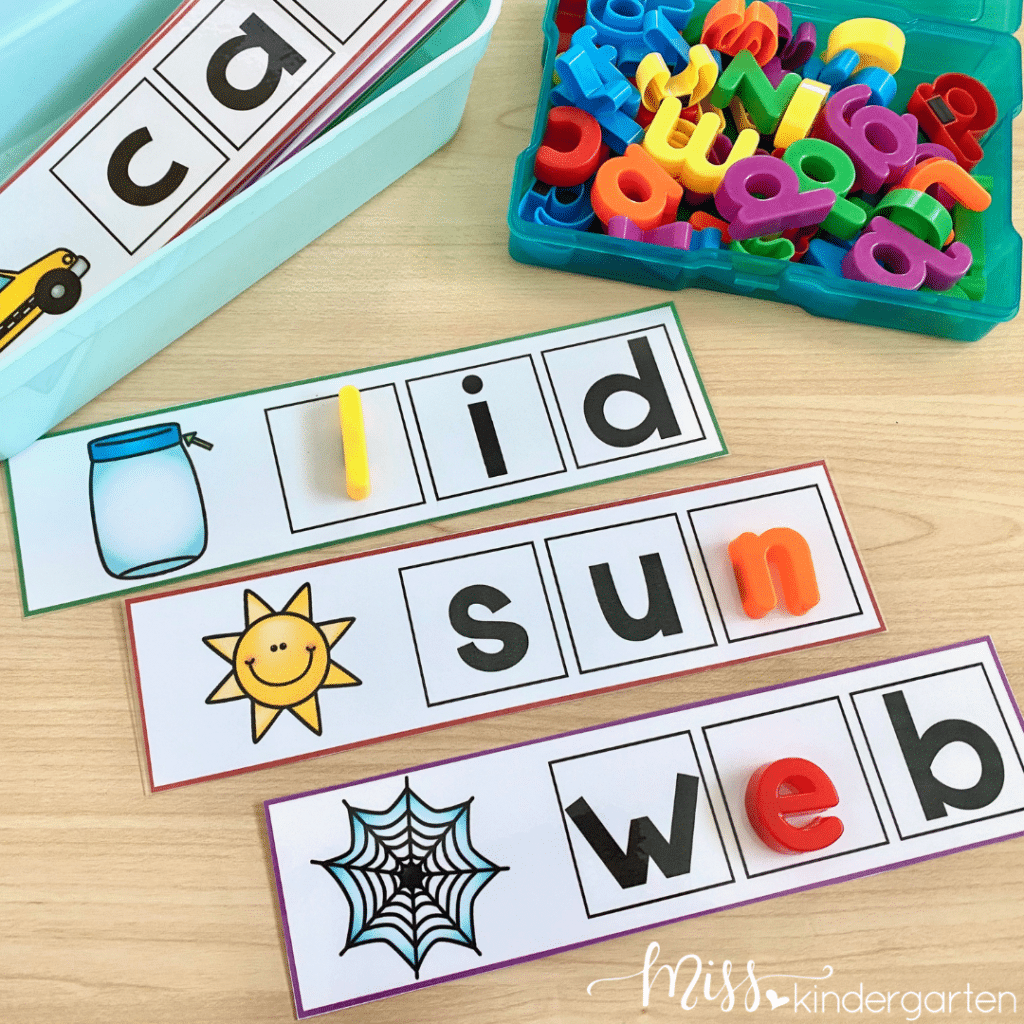
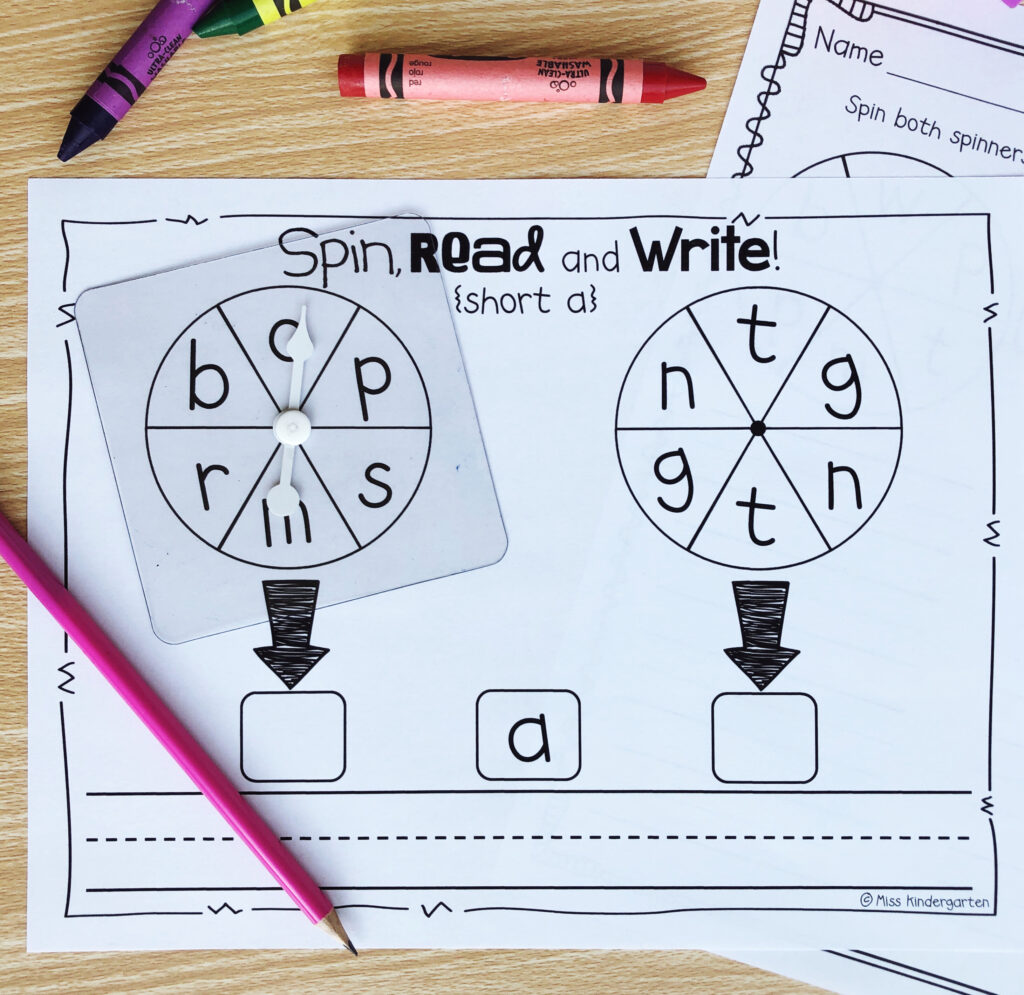
Another reason to use centers for practicing word families is that they can be individualized based on the needs of your students. For young learners who are ready for more of a challenge, you can add multiple word families that use several different vowels.
#3 – Practice Identifying Word Families Quickly
Word identification is an important part of reading. The faster that students can learn to recognize the “chunks” of word families, the better their reading will be. In my word family mini-books, I incorporated some fun word search activities to help students with this skill.
The first activity is a word quilt. Each square contains a different word with a mix of word family words and other CVC words. Students must find and color all the words from the target word family. They can practice reading the words again once they have found and colored each one.
Students can also put on their detective caps and go searching for word family words in sentences. Before reading the sentences, students search for and circle the word family words. Not only does this give them practice in finding that important chunk, but it also helps them prepare for reading the sentence.
#4 – Read Word Families in Context
Once students have been introduced to the new word family and read some words, it is important to move those words into a sentence. After all, this is how students will find the words in real life. Reading words in a sentence is one of the final steps of teaching reading with word families.
These simple sentences use basic sight words and word family words to provide a fun way to practice reading sentences. The students love seeing how their reading fluency improves as they read and re-read.
Begin by having your students go through the sentences and circle or highlight any words in the designated word family. Next, have them read each sentence three times. They can do this with a partner, in a center, or even for homework.
Sentence strips are a great way to keep your word family sentences organized. You can laminate the strips and keep each set of word families together on a binder ring. This allows for easy access in small groups or reading centers.
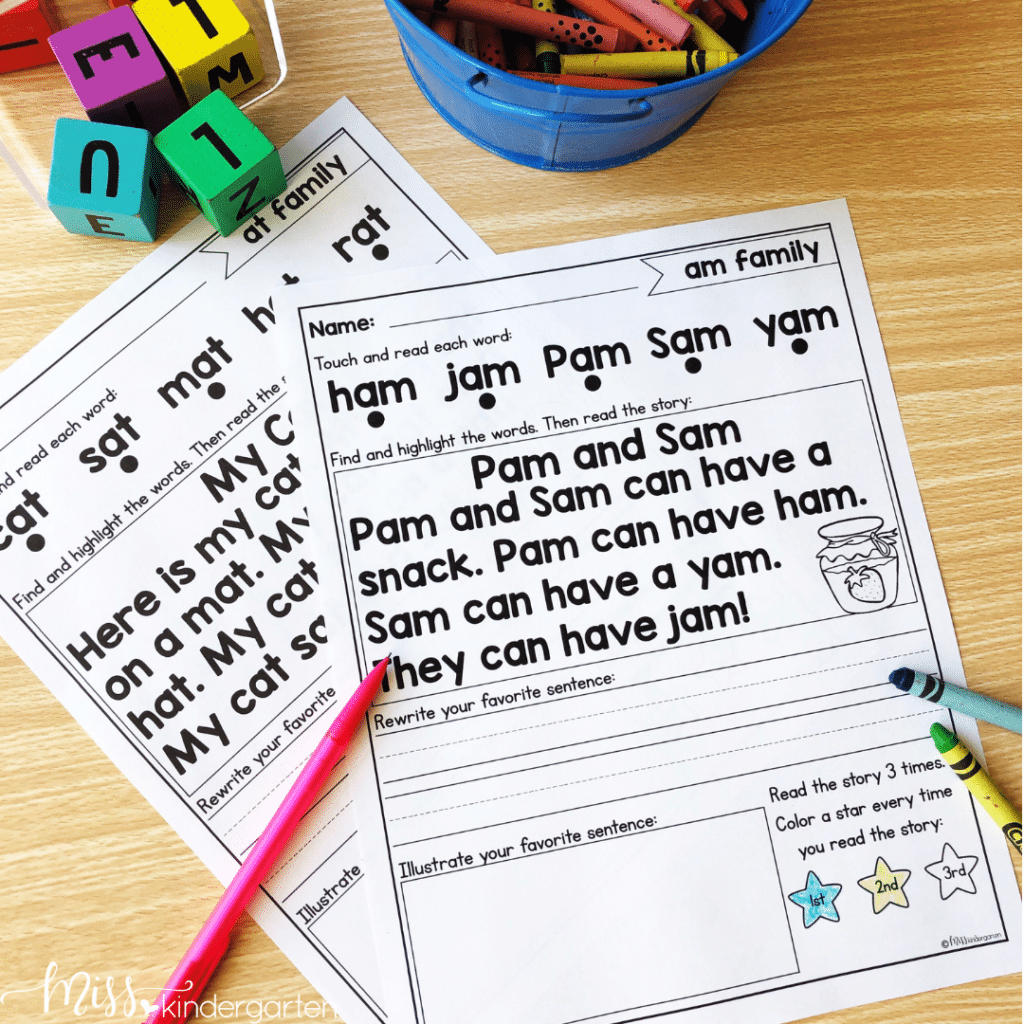
As students find success reading sentences, you can move them on to simple word family reading passages. Students really love knowing that they can read a story all on their own.
The best part of these reading fluency passages is that students can also use this resource to work on reading comprehension. One low prep activity that helps students practice reading with accuracy, fluency, and comprehension? Yes, please!
I hope that these activity ideas have shown you that teaching reading with word families can be a lot of fun! Using pictures, games, identification, and context will help your students become budding readers in no time!
CVC Activities for Teaching Word Families
Are you looking for low prep activities to practice word families? Check out this HUGE bundle of phonics activities for CVC words. It’s full of engaging ways to help your students master word families. All of the activities shown above can be found in this money-saving bundle, plus so much more! Click below to check out everything that is included in this bundle.
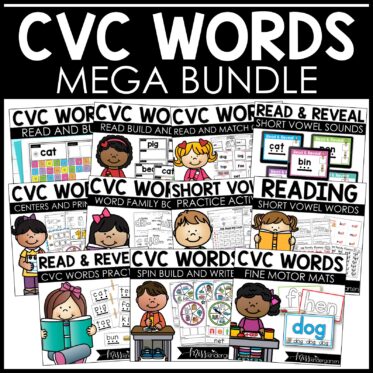
Small Group Reading Intervention CVC Words Activities Phonics Games & Centers
Save These Word Family Activities
Be sure to save these word family tips and resources to your favorite classroom Pinterest board. Then you can quickly come back whenever you need ideas for teaching reading in your classroom.
